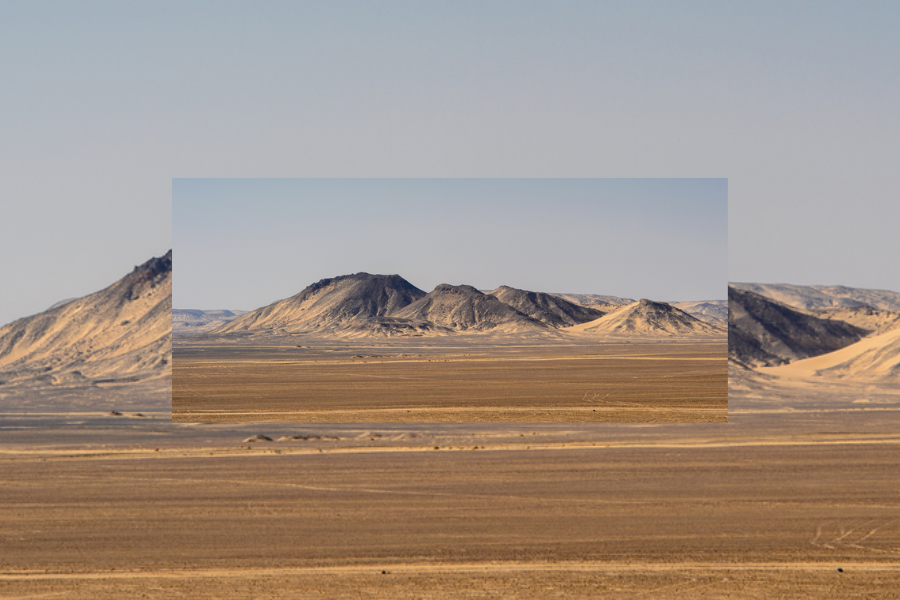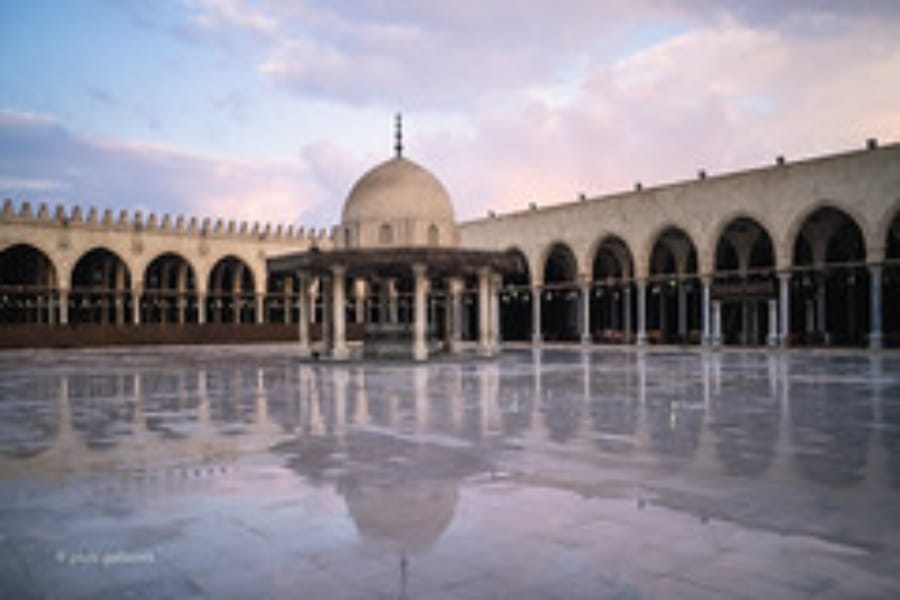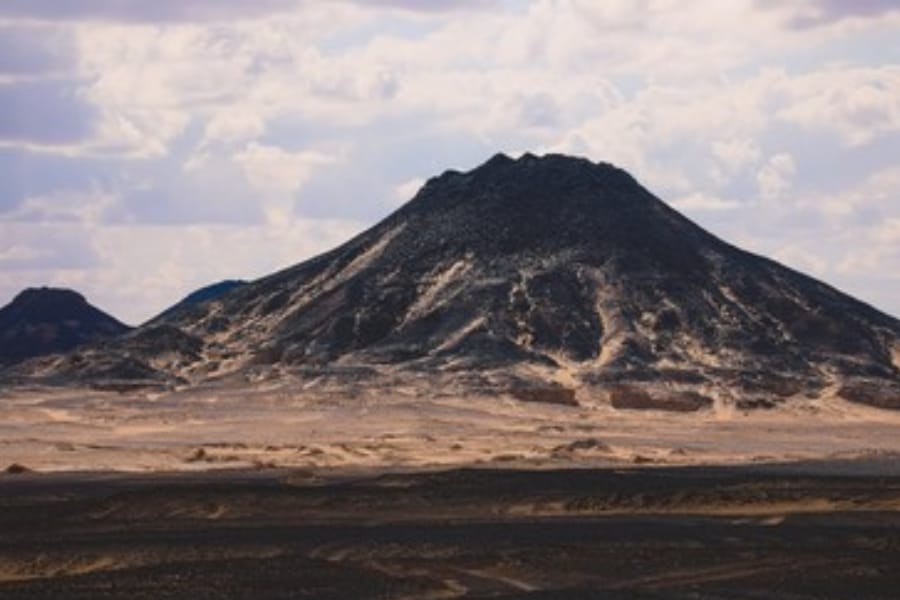Pyramid of Khafre: History, Facts, and Visitor Guide
The Pyramid of Khafre is one of the most breathtaking and mysterious monuments ever built. Long before modern engineering and contemporary art, this ancient structure rose from the desert with unmatched precision and power.
While masterpieces like Da Vinci’s Mona Lisa or Michelangelo’s Sistine Chapel continue to inspire, the Pyramid of Khafre stands apart — not painted on canvas or carved in marble, but built stone by stone to endure eternity. It remains a lasting symbol of Egypt’s brilliance, still captivating the world with its grandeur and unanswered questions.
Key Takeaways
- The Pyramid of Khafre, also called Chephren’s Pyramid, is the second-largest on the Giza Plateau.
- Built during Egypt’s Fourth Dynasty (c. 2558–2532 BCE) as Khafre’s tomb.
- Appears taller than Khufu’s pyramid due to higher bedrock foundation.
- Original height: 136.4m; base length: 215.5m.
- Still retains casing stones near its top, unique among the Giza pyramids.
- Constructed from limestone blocks averaging 2 tons each.
Introduction to the Pyramid of Khafre
The Pyramid of Khafre, built on Giza Plateau, is often mistaken for Khufu’s Great Pyramid due to its size. Its elevated foundation makes it appear taller, though Khufu’s structure is larger in volume and mass.
Khafre’s pyramid, also known as the Pyramid of Chephren, is the second tallest of the Giza pyramids. Remarkably, it still preserves sections of its original smooth casing stones at the top, offering a glimpse of its former brilliance.
Built as Pharaoh Khafre’s tomb during the Fourth Dynasty, the structure measures 215.5 meters at the base and once stood 136.4 meters tall. Its limestone blocks, each weighing over 2 tons, testify to the engineering skill of ancient Egyptian builders.
Who Was Pharaoh Khafre? Facts About the Builder
Pharaoh Khafre, or Chephren, ruled Egypt during the Fourth Dynasty (c. 2558–2532 BCE). Son of Khufu and father of Menkaure, he continued Egypt’s golden age of pyramid building on the Giza Plateau.
His reign reflected prosperity and stability, leaving behind iconic monuments such as his seated statue, now displayed in the Egyptian Museum in Cairo. These works symbolize the artistry and power of the Old Kingdom.
Khafre succeeded his half-brother Djedefre and became the dynasty’s fourth ruler. His wives included Khamerernebty I and Meresankh III, the latter believed to be Menkaure’s mother. His lineage connected him to Snefru and Khufu, cementing his role in Egypt’s most powerful royal family.
When Was the Pyramid of Khafre Built?
The Pyramid of Khafre was constructed during the reign of Pharaoh Khafre, around 2570–2544 BCE. Scholars agree it was completed by 2500 BCE, marking the peak of Old Kingdom pyramid building.
This era emphasized monumental tombs as gateways to the afterlife and eternal symbols of royal power. Khafre’s pyramid reflects both religious devotion and Egypt’s engineering mastery during the Fourth Dynasty.
Where Is the Pyramid of Khafre Located? (Giza, Egypt)
The Pyramid of Khafre stands on the Giza Plateau, just outside Cairo, Egypt. This site, once part of ancient Kemet, overlooks the desert and the Great Sphinx, forming one of the world’s most iconic archaeological landscapes.
The plateau’s elevated terrain enhanced the pyramid’s prominence, creating the illusion that Khafre’s pyramid surpasses Khufu’s in height. Today, it remains a centerpiece of Egypt’s most visited heritage site.
Khafre and the Great Sphinx
The Great Sphinx, carved directly from the bedrock of the Giza Plateau, is widely believed to have been built during the reign of Khafre. Its face is thought to bear the features of the pharaoh himself, symbolizing power and divine protection.
Placed at the eastern end of Khafre’s causeway, the Sphinx served as a guardian of the pyramid complex, linking the king’s funerary monuments with solar and religious symbolism. This connection makes Khafre’s legacy inseparable from one of the most iconic statues in the world.
How Tall Is the Pyramid of Khafre?
The Pyramid of Khafre originally measured about 471 feet with its capstone. Today, it stands at roughly 448 feet, making it slightly smaller than Khufu’s Great Pyramid but still monumental in scale.
Its base spans 706 feet on each side, and the sides rise at a steep 53-degree angle. The total volume is estimated at 6.9 million cubic feet, demonstrating precise engineering and design.
How Was the Pyramid of Khafre Built? Construction Theories
Historians believe Khafre’s pyramid took around 20 years to complete using more than 2 million limestone blocks. Its construction remains one of ancient Egypt’s greatest engineering achievements.
- Scale: About 2.5 million blocks, each weighing 2–15 tons.
- Timeframe: Built in roughly two decades, just 3 meters shorter than Khufu’s pyramid.
- Labor force: Estimated 10,000 workers organized in rotating crews.
- Tools: Copper chisels, wooden sledges, ropes, and ramps.
- Transport: Local limestone and granite brought from Aswan via the Nile.
- Techniques: Tight-fitting joints, possibly stone splines, and debated ramp systems.
Despite many theories, the precise methods remain an enduring mystery, symbolizing the genius of Old Kingdom engineering.
Inside the Pyramid of Khafre: Structure and Chambers
The interior of Khafre’s pyramid contains corridors and chambers leading to a central burial room. Its design, simpler than Khufu’s, still reveals impressive precision and scale.
The burial chamber lies near the pyramid’s center, carved directly into bedrock. Measuring about 14.15 by 5 meters, it once held Khafre’s polished granite sarcophagus set partially into the floor.
Explorer Giovanni Belzoni entered the chamber in 1818 and found it looted, with only animal bones left behind. Khafre’s mummy and treasures remain undiscovered, adding mystery to this monument.
Why Is the Pyramid of Khafre Important?
The Pyramid of Khafre is significant as both a royal tomb and a symbol of divine kingship. Its scale and precision highlight ancient Egypt’s spiritual beliefs and architectural mastery.
To the south once stood a smaller satellite pyramid, now mostly destroyed. Beyond the main pyramid, Khafre’s funerary complex featured the Valley Temple, linked by a 494-meter causeway, and dedicated to deities like Hathor, Bubastis, and Horus.
Next to the pyramid, the Mortuary Temple hosted rituals and offerings. Life-size statues of Khafre were found here, and some blocks weighed over 400 tons — showcasing extraordinary ambition and skill.
Together, these elements form one of the most complete royal complexes of ancient Egypt, making Khafre’s pyramid a lasting legacy of power and faith.
Symbolism and Religious Meaning
The Pyramid of Khafre was more than a tomb—it represented the pharaoh’s journey to eternity. Its steep sides symbolized rays of the sun, guiding Khafre’s soul toward the sky and the god Ra.
The pyramid’s alignment with the cardinal points and its connection to nearby temples reflect the Egyptians’ belief in balance between earth and cosmos. It was designed not only as a burial place but as a monument of divine kingship and eternal life.
What Treasures Were Discovered Within the Pyramid of Khafre?
Unlike Khufu’s Great Pyramid, the Pyramid of Khafre was found largely empty. No significant artifacts or royal remains were recovered inside, suggesting it was looted in antiquity.
Explorers discovered animal bones but no treasures, reinforcing the belief that the pyramid’s riches were plundered soon after its construction. This absence adds to its enduring mystery.
Khafre Pyramid Role in the Funerary Complex
Khafre’s pyramid was the centerpiece of a vast funerary complex, including a mortuary temple, valley temple, causeway, and smaller pyramids, all designed to honor the king in death.
For the ancient Egyptians, the pyramid served as both a tomb and a spiritual gateway. It symbolized the pharaoh’s journey to join the gods, especially Osiris, ensuring his eternal role as ruler beyond death.
The Story of Designing Khafre Pyramid
The Pyramid of Khafre was designed with a precise 4:3 ratio, creating a steeper, more striking profile than Khufu’s Great Pyramid. Its proportions reflect advanced ancient Egyptian geometry.
- Khafre’s pyramid, slightly shorter than Khufu’s, appears taller due to its elevated foundation 10 meters higher.
- It used about 73% of the stone volume of Khufu’s pyramid but retained a monumental presence through calculated proportions.
- Architects tested multiple base lengths before finalizing 408 cubits, with a diagonal of 577 cubits and a height of 272 cubits, adhering to the 4:3 ratio.
- The lower courses were built with granite, while the upper layers used limestone, emphasizing symmetry and durability.
Travel Tips for Visiting the Pyramid of Khafre in Giza
Planning a visit to the Pyramid of Khafre can be an unforgettable experience. These practical tips will help you prepare, save time, and make the most of your trip to the Giza Plateau.
- Opening Hours: The Giza Plateau is open year-round, usually from 8:00 AM to 5:00 PM, though hours may vary seasonally.
- Ticket Price: Entry to the plateau costs around 200–240 EGP. To go inside the Pyramid of Khafre, an extra ticket of 100–150 EGP is required.
- Best Time to Visit: Early mornings or late afternoons are ideal to avoid crowds and heat.
- What to Wear: Light, breathable clothes, hats, and sunglasses are essential in the desert sun.
- Footwear: Comfortable shoes are a must for walking on uneven terrain and sand.
- Stay Hydrated: Carry water, especially during summer visits, as shade is limited.
- Photography: Bring a camera or phone with enough storage—sunrise and sunset shots are spectacular.
- Guides: Hiring a licensed guide can enrich your visit with historical context and local stories.
- Security Checks: Expect bag inspections at entrances—pack light to pass quickly.
- Transport: Taxis and ride-hailing apps like Uber are the easiest way to reach the Giza Plateau from central Cairo.
Quick Facts about the Pyramid of Khafre
| Location | Giza Plateau, near Cairo, Egypt |
| Dynasty | Fourth Dynasty of the Old Kingdom |
| Builder | Pharaoh Khafre (Chephren) |
| Construction Date | c. 2570–2544 BCE |
| Original Height | 143.5 meters (471 feet) |
| Current Height | 136 meters (448 feet) |
| Base Length | 215.25 meters (706 feet) |
| Notable Feature | Preserved casing stones near the top |
| Nearby Monuments | Great Sphinx, Valley Temple, Great Pyramid of Khufu |
Khafre Pyramid vs. Khufu and Menkaure
The three pyramids of Giza were built by Khufu, Khafre, and Menkaure, each leaving a unique mark on history. While Khufu’s Great Pyramid is the tallest and most massive, Khafre’s stands out for its preserved casing stones and the illusion of greater height. Menkaure’s pyramid, though smallest, is distinguished by its granite construction and refined proportions.
| Pyramid | Original Height | Notable Feature |
|---|---|---|
| Khufu (Great Pyramid) | 146.6 m (481 ft) | Largest pyramid in Egypt |
| Khafre | 143.5 m (471 ft) | Still retains casing stones near the top |
| Menkaure | 65 m (213 ft) | Granite and limestone core |
Recommended Tours Including the Pyramid of Khafre
Looking for the best way to explore the Pyramid of Khafre? These recommended Egypt tours combine visits to Giza’s iconic monuments with expert guides and unique experiences.
| Tour | Duration | Highlights |
|---|---|---|
| 5 Days Egypt Package Tours: Cairo, Luxor & Abu Simbel | 5 Days | Giza Pyramids including Khafre’s pyramid, Luxor temples, Abu Simbel |
| 10 Days Egypt Classic Tour – Cairo, Alexandria, Luxor, Aswan & Abu Simbel | 10 Days | Includes Khafre’s pyramid, Alexandria, Nile Cruise, Abu Simbel |
| Giza Pyramids Day Tour from Port Said – Private Shore Excursion | Day Tour | Focused visit to Khafre’s pyramid, Great Sphinx |
| Cairo Day Tour from Alexandria Port – Visit Pyramids & Museum | Day Tour | Khafre’s pyramid, Great Pyramid, Egyptian Museum |
| Day Tour from El Gouna to Cairo by Private Vehicle | Day Tour | Private visit to Khafre’s pyramid and Cairo highlights |
| Cairo Pyramids Day Tour from Sokhna Port – Private Shore Excursion | Day Tour | Guided tour of Khafre’s pyramid, Sphinx, and Giza Plateau |
Or you can easily tailor-make your own tour to include the Pyramid of Khafre.
Frequently Asked Questions About the Pyramid of Khafre
1. Can you enter the Pyramid of Khafre today?
Yes, visitors can enter the Pyramid of Khafre, though access may change depending on preservation work. A separate ticket is usually required.
2. How tall is the Pyramid of Khafre now?
The pyramid originally stood at 143.5 m (471 ft). Today it measures around 136 m (448 ft) due to erosion and missing casing stones.
3. Why does Khafre’s pyramid still have casing stones at the top?
The surviving casing stones at the top were too difficult to remove in antiquity. They show how the pyramid once looked when fully covered in white limestone.
4. What is the difference between the Pyramid of Khafre and the Pyramid of Khufu?
Khufu’s Great Pyramid is taller, but Khafre’s appears higher because of its elevated base. Khafre’s also preserves more casing stones.
5. How long did it take to build the Pyramid of Khafre?
It likely took about 20 years to build, similar to Khufu’s pyramid, using thousands of laborers and millions of limestone blocks.
6. What tools did ancient Egyptians use to build Khafre’s pyramid?
Workers used copper chisels, wooden sledges, stone hammers, levers, and ramps to cut, move, and position massive blocks.
7. Is the Pyramid of Khafre aligned with stars?
Yes, it is aligned with the cardinal points and may reflect solar and stellar cycles, showing the Egyptians’ advanced astronomy.
8. Are tourists allowed inside year-round?
Generally yes, but interior access may close for conservation. Always check updates before visiting.
9. What was found inside the Pyramid of Khafre?
Explorer Giovanni Belzoni found a granite sarcophagus in 1818, but no mummy or treasures, as it was looted in antiquity.
10. How much would it cost to build Khafre’s pyramid today?
Modern estimates suggest hundreds of millions of dollars would be needed for materials, labor, and engineering.
Conclusion
The Pyramid of Khafre remains one of Egypt’s most remarkable monuments, showcasing the skill of ancient architects and the symbolic precision of their designs.
Many scholars suggest its proportions reflect the ancient “seed” concept — a geometric principle that guided pyramid slopes based on height-to-base ratios. This theory highlights the Egyptians’ mastery of mathematics and their integration of spiritual beliefs into architecture.
More than just a royal tomb, Khafre’s pyramid continues to inspire awe as a symbol of engineering genius, cultural legacy, and the enduring grandeur of the Giza Plateau.












